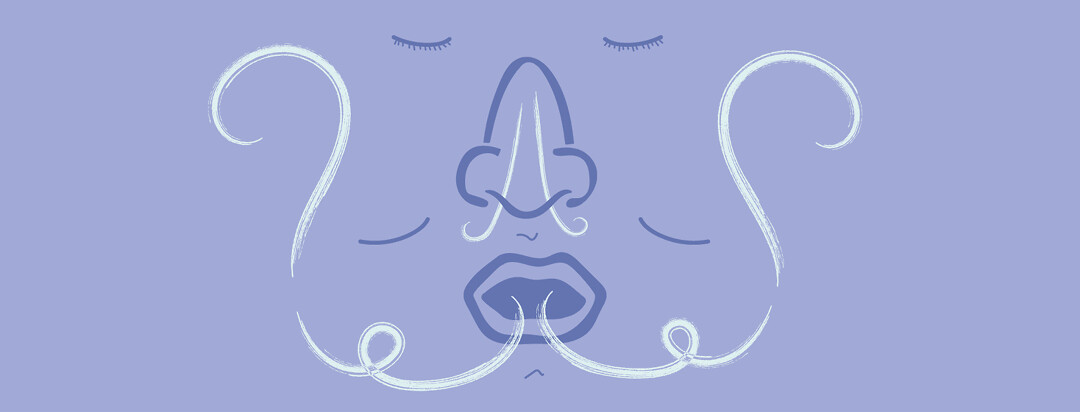Is it Possible to Breathe Insomnia Away?
As a sleep technologist, I’ve worked closely with many patients struggling to fall asleep in the lab. They were there because they either couldn’t fall asleep, stay asleep, or maintain sleep through an entire sleep period.
Typically, their studies identified the root causes of their sleeplessness. Then, together with their sleep specialists, they took proactive steps to reclaim their sleep.
Sometimes this meant undergoing behavioral therapies, or careful dosing of sleep medications, or neurostimulation therapy, or some other complex disease or medication management.
Breathing exercises may help prevent insomnia
Still, insomnia can persist. I don’t need to tell the hopelessly sleepless just how very difficult it can be to nip insomnia in the bud.
Before I became a sleep technologist, I’d also dealt with chronic insomnia. But once I earned my credentials, I applied new techniques I’d learned that not only helped prevent my own insomnia but also helped my patients to sleep through their lab-based tests.
These techniques are things we can all do, which don’t cost anything: breathing exercises.
3 kinds of breathing exercises
Box breathing1
- While lying in a comfortable position, close your mouth and inhale through your nose.
- Follow by exhaling through your mouth, trying to gently push all the air out of your lungs.
- Now inhale again, slowly, counting to 4 in your head and filling your lungs a little bit more with each number you count.
- Hold your breath, counting to 4 in your head.
- Slowly exhale through your mouth until you feel like you’ve completely emptied your lungs of air.
- Repeat until you fall asleep.
4-7-8 breathing2
- While lying in a comfortable position, empty your lungs completely, making a breathy whooshing sound through your lips as you do so.
- Close your mouth and inhale through your nose, counting to 4 in your head.
- Hold your breath, counting to 7 in your head.
- Slowly exhale through your mouth while counting to 8 until you feel like you’ve completely emptied your lungs of air.
- Repeat until you fall asleep.
Diaphragmatic breathing3
- While lying in a comfortable position, place one hand flat against your chest and the other hand flat against your belly (to sense movement).
- Close your mouth and inhale through your nose.
- As you do this, try to keep your chest movement to a minimum while allowing your belly to rise and help fill the lungs with each inhale.
- Exhale each breath through pursed lips (this might sound like a light whoosh).
- Repeat, focusing on the stillness of your chest muscles and the elastic inflation of your belly muscles, until you achieve a breathing rhythm in which your chest muscles don’t move at all.
- Continue to do so until you fall asleep.
Breathing to relax is ancient wisdom
While learning these techniques, I was reminded of breathing patterns I’d already learned in yoga classes. Indeed, many yoga and meditation practitioners teach these same techniques, usually referring to them as forms of pranayama.4
Can breathing exercises fix insomnia?
It really depends upon what’s causing the sleeplessness.5 For example, insomnia can be:
- A symptom of a separate condition impairing one’s physical or mental health
- Caused by side effects from the use of certain medications
- Due to circadian rhythm disruptions related to the time of day or night you’re trying to sleep (or stay awake)
- The result of untreated restless legs syndrome (RLS) because the legs just won’t calm down
- The outcome for people with obstructive sleep apnea (OSA) who fall asleep just fine but awaken repeatedly due to lapses in breathing throughout the night
- Directly related to poor sleep environments (too light, too warm, too noisy)
In any of these cases, breathing techniques aren’t going to fix the problem. Efforts targeting the root cause of insomnia will be of greater benefit.
Intentional breathing and anxiety relief
But what about someone struggling with sleeplessness due to anxiety?
No matter its source (job loss, divorce, parenting, and yes, the pandemic), anxiety is a major sleep buster. It leads to hyperarousal caused by racing thoughts you just can’t get out of your head.6 Add to this an unhealthy fear of sleeplessness, and you just can’t win.7
But here’s the thing: while we can’t stop turning over thoughts while trying to sleep, we may notice areas of tension throughout our bodies that intentional breathing could relieve.
If anxiety is the likely culprit behind your insomnia, why not try these techniques first?
Nothing to lose
I can’t say whether they’ll work for you, but they've sure helped me over the duration of the pandemic. They’ve also served many of my patients in the sleep lab when I coached them to breathe themselves to sleep during their studies.
You've got nothing to lose and sleep to gain.

Join the conversation